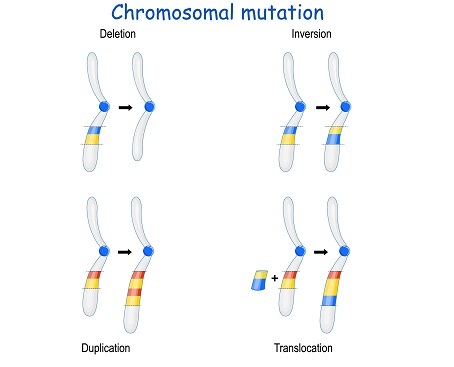
 Data Structure
Data Structure Networking
Networking RDBMS
RDBMS Operating System
Operating System Java
Java MS Excel
MS Excel iOS
iOS HTML
HTML CSS
CSS Android
Android Python
Python C Programming
C Programming C++
C++ C#
C# MongoDB
MongoDB MySQL
MySQL Javascript
Javascript PHP
PHP
- Selected Reading
- UPSC IAS Exams Notes
- Developer's Best Practices
- Questions and Answers
- Effective Resume Writing
- HR Interview Questions
- Computer Glossary
- Who is Who
What Is the Process of Neofunctionalization and What Is Its Function?
Introduction
Once Theodosius Dobzhansky quoted that "Nothing in biology makes sense except in the light of evolution." This generalization has been validated by recent progress in Biochemistry and Molecular biology. The remarkable similarity of metabolic pathways and gene sequence across the phyla argues strongly that all modern organisms are derived from a common evolutionary progenitor by a series of small changes, each of which conferred a selective advantage over the other.
Evolution by Gene Duplication and Neofunctionalization
Sometimes due to mutations duplication takes place which leads to the introduction of a second copy of the whole gene into the chromosome due to defective replication. No deletions take place in the second copy, and it is superfluous which leads to the evolution of new genes with new functions while retaining the original gene and its function. This whole process of evolution is known as evolution by gene duplication.

Once a gene is duplicated one of three things can happen to it ?
The duplicate gene produced does not have a new function, but it is preserved for evolution later, this process is known as subfunctionalization.
The duplicate gene acquires a new function whereas the original gene retains its old function, this process is known as neo-functionalization.
The duplication that is detrimental in nature is lost that causes neither the retention of old function nor the development of new function.
Neofunctionalization- An overview
After the event of gene duplication copy or paralog of the original gene is produced. While the original gene retains its ancestral function the paralog diverges to attain a whole new function different from the original one. This whole process of gene duplication is known as neofunctionalization.
It is a type of adaptive mutation wherein the duplicate gene acquires a whole new function that was not present in the original one. The new function acquired by the duplicate gene is due to molecular changes that help this gene to take up new functions. This change was proposed to be the root cause of divergence in organisms.
How Does the Process of Neofunctionalization Take Place?
It all starts with the process of gene duplication, which is a result of a defense mechanism against adverse environmental conditions consequently leading to the production of two genes, first is the original one that retains the ancestral function and the second is the duplicate one which does not inherit the ancestral function instead gets a new function which protects the gene from adversity.
This new function adopted by the gene if proven to be useful will be selected by natural selection and will be inherited to the next generation and remains fixed with the given population. The new function of the duplicate gene is attributed due to the redundancy of the ancestral gene.
One more reason for the new function is due to changes in the regulatory sequences or changes in the coding region, but the formation of duplicate genes with new functions does not affect the formation of the proteins or enzyme action.
Example of Neofunctionalization
One of the classic examples of neofunctionalization is the capability of Antarctic zoarcid fish to withstand freezing conditions in the Antarctic region. Antifreeze protein gene III was formed as a result of duplication of a sialic acid gene. This new gene imparted a new property to withstand freezing depression and allowed them to survive in the extremely cold condition of the Antarctic.
Different Models That Explain the Significance of Neofunctionalization
It was Mullar, who stated that neofunctionalization occurs due to gene duplication in 1936.
Later Ohno proposed that a new function to a gene in a population is attributed to neofunctionalization that led to the evolution of new species closely related to the older population in 1970.
Later in 1987 Ohta stated that the duplicate gene with new function is inherited by the next generation as they are formed for a natural defense against the adverse environmental condition.
Most recent studies suggest that divergent evolution is caused due to the neofunctionalization that fixes the new duplicate gene with a newer function in a population.
Significance of Neofunctionalization
Neofunctionalization is sometimes important for an organism to adapt itself to changing or harsh environmental conditions.
Gene duplication allows the development of new gene that leads to the formation of novel organisms.
Studies about neofunctionalization shed light on the evolutionary processes and divergence of new species by gene duplication.
It helps us understand the evolutionary relationship between two species. Gene duplication in angiosperms led to the formation of novel regulatory and developmental genes.
It not only indicates the relationship between two species but also their relationship with the environment.
Conclusion
Neofunctionalization was caused as a result of gene duplication followed by gradual changes in the sequence of both copies. Typically, paralogous protein is similar not only in sequence but also in three-dimensional structure although they have acquired different functions during their evolution.

